The importance of biodiversity conservation for a sustainable future
Biodiversity benefits many facets of human wellbeing, including health and the provision of raw materials. Whilst rising emissions have been getting immense attention, biodiversity is one aspect of nature that deserves more focus as it plays a vital role in the survival of life on Earth.
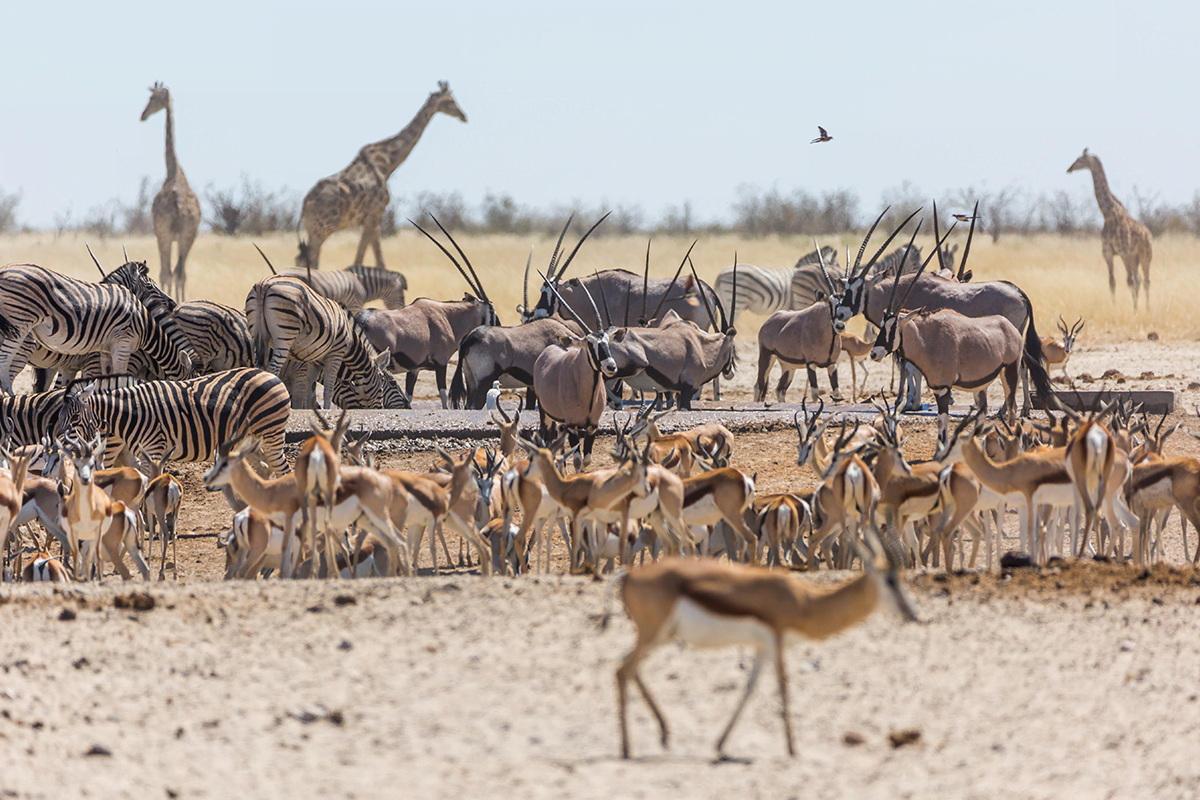 Different species sharing their habitat peacefully at Etosha National Park, Namibia, Africa.
Different species sharing their habitat peacefully at Etosha National Park, Namibia, Africa.
What is biodiversity?
Biodiversity refers to the variety of life on Earth, including the variety of species, ecosystems, and genetic diversity within species. It encompasses all living organisms, from microorganisms to mammals, and the ecosystems they inhabit. Biodiversity is essential for the functioning of the planet's ecosystems and for providing vital services, such as air and water purification, pollination, and climate regulation.
Certain regions of the world have greater biodiversity than others, especially tropical areas. Hotspots are places with exceptionally high biodiversity levels. Hotspots are also home to endemic species, which are species that can only be found in one place.
Read more: Nature’s symphony: 15 Interconnected wonders of biodiversity
Why is biodiversity important?
Biodiversity is vital and priceless. It is much more than the pleasant picture it is to look at. Without biodiversity, both human and animal life would be completely incapable of surviving.
We rely on nature to give us food, shelter, clean water, and medicines, as well as to safeguard us against adverse weather events like flooding. The natural ecosystems all around us are essential to life as we know it. Removing one species or one piece of the ecosystem puzzle can have far-reaching consequences, as various plants and animals are interdependent.
Read more: Impact of forests on biodiversity
Factors that endanger biodiversity
Biodiversity is threatened by many factors, some of which we will be looking at below.
Invasive Species
Alien or exotic species that are unintentionally or purposefully introduced by humans are considered invasive species. These species establish themselves in their new habitat and proliferate unchecked, endangering regional biodiversity. After habitat loss, invasive species are considered the second biggest threat to biodiversity.
Pollution
Pollution seriously threatens biodiversity, which is one of the most difficult challenges to solve, because pollutants are not restricted by national borders. For instance, fertilisers and pesticides from agricultural runoff may contaminate groundwater and rivers before entering the ocean. Pollutants in the atmosphere travel with the prevailing air currents and are deposited far from where they originated.
Over-exploitation for commercialisation
Overusing resources can cause more environmental harm compared to the benefit provided by such resources. Shrimp farming, for instance, degrades coastal fisheries, destroys wetlands, and pollutes coastal waters in countries like India, Thailand, Ecuador, and Indonesia. According to scientific research, shrimp farming has a greater negative impact on the environment than on its ability to export shrimp.
Habitat loss and fragmentation
Habitat loss and fragmentation refer to the destruction, degradation, and fragmentation of natural habitats where plants and animals live due to human activities like deforestation, fire, overuse, and urbanisation. Habitat loss is the principal cause for 85% of all species being listed as vulnerable or endangered.
Read more: The vital role of reforestation in bird migration
Rising climates
By 2030, according to many climatologists, global temperatures could rise by roughly 2°C, causing sea levels to rise by 30 to 50 cm, resulting in the destruction of ecosystems and biodiversity.
Species extinction
Species extinction happens naturally. According to the geological record, numerous plant and animal species have vanished over the ages due to their inability to adapt to changing environmental conditions. However, according to recent research, the rate of species extinction is currently between a hundred and a thousand times higher than it should be.
Read more: From the brink of extinction: four endangered species that made a comeback
Illegal wildlife trade
Illegal wildlife trade refers to the illegal capture, trade, harvesting, and transportation of wild flora and animals to be used for the pet trade, food, or medicine, or for horticultural or therapeutic benefits.
Read more: 7 Strategies for protecting wildlife
Population growth and over-consumption
At the turn of the 20th century, there were only a billion people. Today, there are more than eight billion. This population growth results in a quick increase in the exploitation of natural resources, including food, minerals, and water, which is currently unsustainable. Overconsumption is one of the more significant problems of unsustainable use. 25% of the world's population uses roughly 75% of its natural resources.
Biodiversity and carbon sequestration
Biodiversity plays a key role in carbon sequestration, the process of removing and storing carbon from the atmosphere. Trees, plants, and other vegetation absorb carbon from the atmosphere through photosynthesis and store it in their biomass. Forests and other ecosystems are some of the most significant carbon sinks on the planet, and their preservation and restoration are critical for mitigating rising greenhouse gases. Protecting and restoring biodiversity can help reduce greenhouse gas emissions and remove excess carbon from the atmosphere, making it an essential aspect of environmental impact mitigation and adaptation.
 Detail of some leaves during the photosynthesis process.
Detail of some leaves during the photosynthesis process.
Read more: Carbon farming: How is it good for the environment, farmers and biodiversity?
Biodiversity and ecosystem services
Ecosystem services are benefits humans derive from natural ecosystems, such as clean air, water filtration, crop pollination, and pest control. These services are provided by the diverse array of plants and animals that make up our ecosystems, making biodiversity crucial for our survival and wellbeing.
Read more: 5 Types of ecosystems
What is the role of biodiversity in maintaining ecosystem services?
Biodiversity is essential for maintaining ecosystem services. A diverse array of species provides a range of services and increases an ecosystem's resilience to disturbances. For instance, a diverse forest can offer a variety of resources, such as timber and non-timber forest products, recreation opportunities, and regulating services like carbon sequestration and water regulation.
Read more: 10 Vital ecosystem services: sustaining life on Earth
Examples of ecosystem services provided by biodiversity
- Pollination of crops: Many plant species rely on insects, birds, and other animals for pollination, and a diverse array of pollinators can ensure a higher yield and better quality crops.
- Water filtration: Wetlands, marshes, and other natural habitats filter and purify water, making it safe for human consumption.
Soil formation and fertility: Biodiversity plays a vital role in creating fertile soil and maintaining soil health.
- Climate regulation: Forests, oceans, and other ecosystems help regulate the Earth's climate by absorbing and storing carbon dioxide.
- Disease control: Many species of birds and bats control insect populations, helping to prevent the spread of diseases that can affect humans and livestock.
- Recreational opportunities: Parks, wildlife refuges, and other protected areas provide opportunities for outdoor recreation and can also drive tourism, generating economic benefits for local communities.
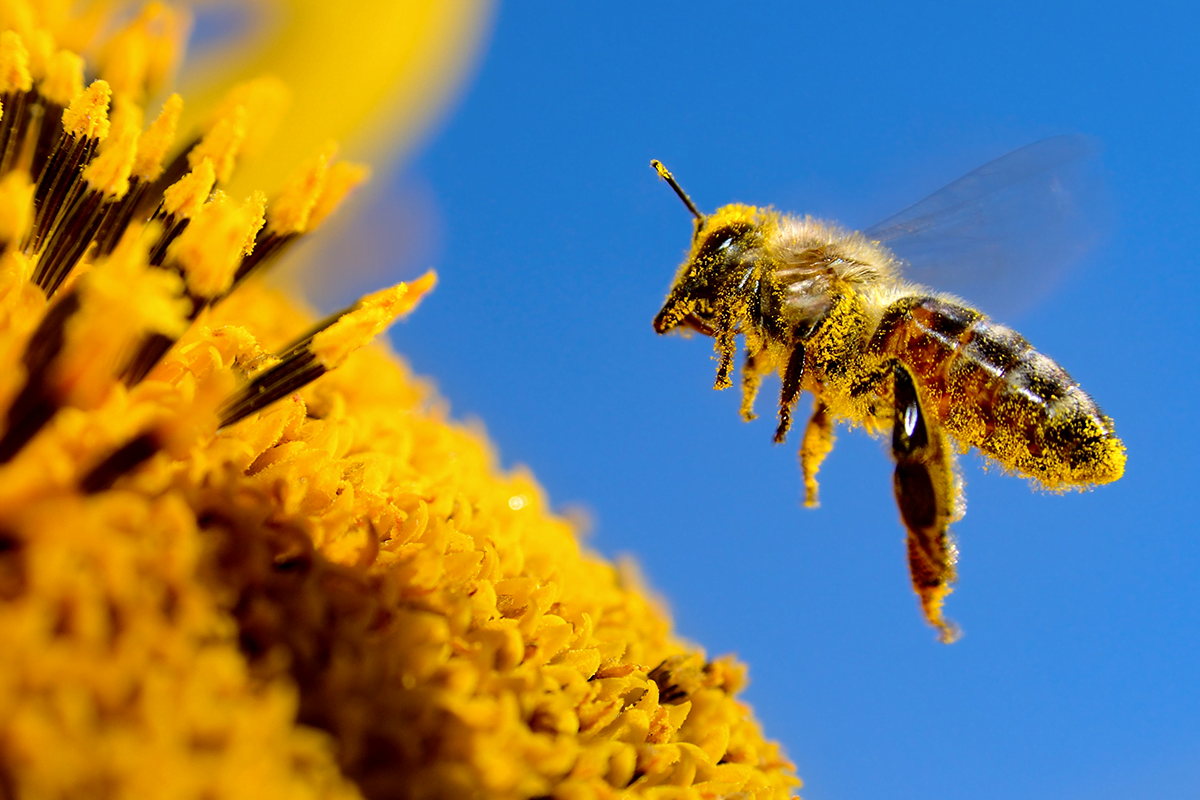 A bee flies over a sunflower during the pollination process.
A bee flies over a sunflower during the pollination process.
Can ecosystem services be traded in the market?
Unlike goods that are easily purchased and sold in marketplaces, many ecosystem services are not traded for visible prices. This reveals that financial markets are yet to recognise the value of biodiversity and natural processes that benefit people.
Fortunately, new techniques are emerging to assign monetary values to benefits, such as recreation or clean water. Incorporating the true economic value of these services into decision-making could significantly slow or reverse the degradation of ecosystem services.
Over the past century, certain countries have profited from the transformation of natural ecosystems and the growth of global trade. Others have suffered the consequences of biodiversity loss and decreased access to the resources they rely on. Environmental changes disproportionately affect the world's poorest communities as it is more difficult for them to adapt.
It is essential to recognise that the loss of biodiversity can result in the loss of ecosystem services. Conserving biodiversity is necessary to maintain these vital services for the benefit of both people and nature.
Green Earth can help your company become more sustainable by helping you to integrate trees into your business.
Integrate trees into your business
We can help your company become more sustainable by integrating trees into your business.
Biodiversity and human wellbeing
Biodiversity's contribution to human health and wellbeing is crucial. Its plant and animal components provide essential resources like food, medicine, and clean air and water. Moreover, biodiversity's positive impact extends to our mental and emotional health. Research has demonstrated that exposure to nature and biodiversity can alleviate stress, improve mood, and enhance cognitive function. By preserving biodiversity, we can ensure that these benefits are available for current and future generations.
What is the relationship between biodiversity and human wellbeing?
Scientific evidence supports the link between biodiversity and human wellbeing. When major predators are lost due to hunting and changes in land use, certain vectors or hosts can become more common, increasing the risk of disease transmission to humans.
Why is biodiversity important for human life?
Biodiversity is essential to human life in many ways, even for things we may not find attractive, such as bugs and germs. Pollinators like bees, birds, and insects are responsible for a third of the world's crop production, including fruits such as apples, cherries, blueberries, and almonds.
Read more: Sweet solutions: the role of bees and Impact Investments in environmental restoration
Invertebrates keep soil healthy for agriculture, while microbes release the nutrients plants need to grow. Oceans provide a significant source of animal protein. Trees, wetlands, and grasslands slow rainfall and aid soil absorption, reducing flooding. Trees also absorb carbon dioxide, purify and cool the air, and help combat rising emissions.
Read more: Ugly species need biodiversity protection too
In addition to the many products plants provide, like medicines, exposure to nature and biodiversity can positively impact our mental and emotional wellbeing. Numerous studies have shown that spending time in nature reduces stress and enhances mood. Exposure to green spaces has also been linked to improved cognitive function and attention and lower rates of depression and anxiety.
Economic value of biodiversity
In addition to the intrinsic value of biodiversity, it also has significant economic value. Biodiversity supports industries such as agriculture, forestry, and tourism, providing important sources of food and income for millions of people worldwide. The conservation and sustainable use of biodiversity is therefore essential for achieving sustainable economic development.
Biodiversity and cultural values
Biodiversity also has immense cultural significance. It plays a central role in the cultural identity and spiritual beliefs of many communities around the world. Indigenous communities, for example, rely on biodiversity for their traditional livelihoods and have a deep spiritual connection to the natural world. Biodiversity also plays a crucial role in traditional medicines and cultural practices. The conservation and sustainable use of biodiversity is therefore essential for preserving cultural heritage and promoting cultural diversity.
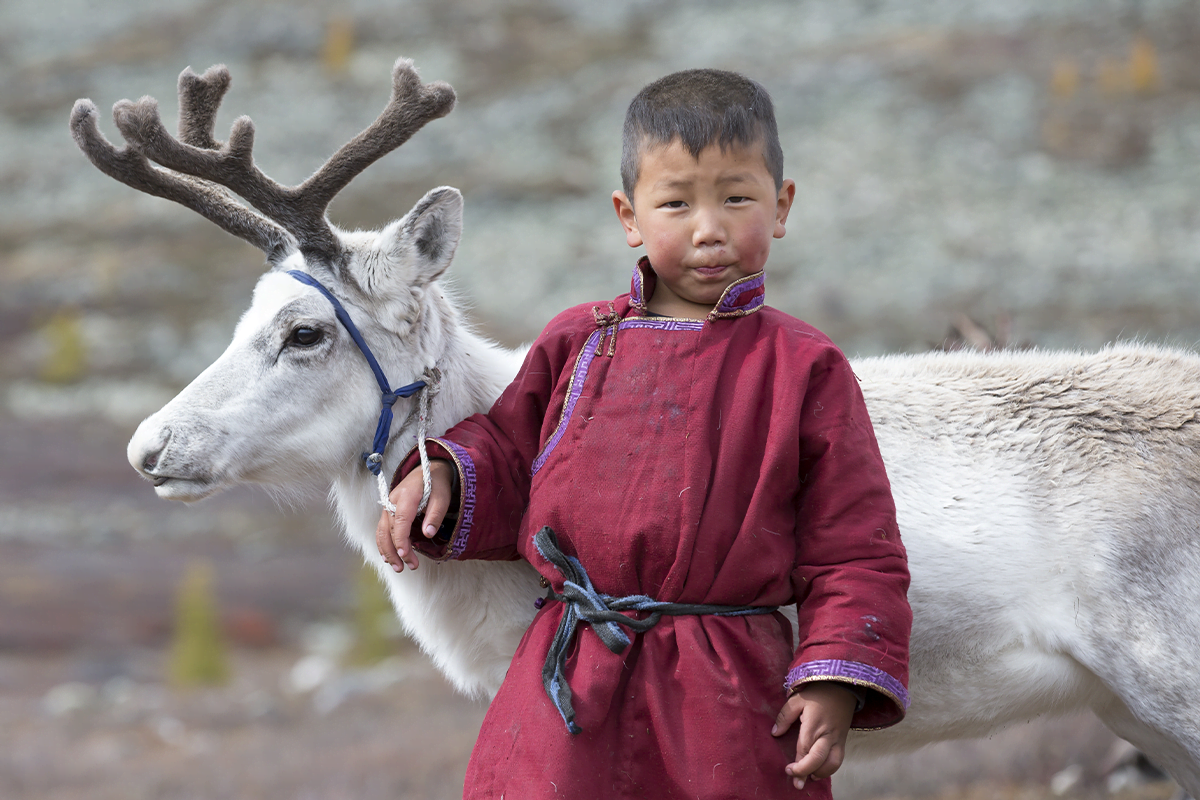 A Tsaatan boy, dressed in a traditional title with a reindeer baby, Mongolia.
A Tsaatan boy, dressed in a traditional title with a reindeer baby, Mongolia.
Biodiversity in the future
The future of biodiversity and its impact on human wellbeing has been examined by the Millennium Ecosystem Assessment, which produced four possible scenarios for the year 2050 and beyond. These scenarios are based on regionalisation or globalisation and a proactive or reactive approach to environmental challenges.
In all four scenarios, forest cover is expected to decrease, and agricultural land is expected to increase, particularly in developing countries. This habitat loss will lead to a decline in both local and global biodiversity. Proactive environmental strategies are thus necessary to slow these trends.
Aquatic biodiversity and fish populations are predicted to decline due to high nutrient levels, overfishing, alien species invasion, and pollution.
The loss of biodiversity will have direct and indirect impacts on human wellbeing. Direct consequences include a higher likelihood of abrupt environmental events, such as fishery collapses, floods, droughts, wildfires, and disease outbreaks. Indirect effects include disputes over dwindling food and water supplies.
Despite an expected increase in the average income per person, there may be more inequality in access to food. Trade-offs between opposing aims, such as agricultural production and water quality, or water use and aquatic biodiversity, will need to be addressed in major decisions. Conserving biodiversity can provide many benefits derived from ecosystems, leading to higher levels of wellbeing.
Biodiversity loss and its causes
Biodiversity loss is the decline in the variety of life forms on Earth. This can include the loss of species, habitats, and genetic diversity. There are many reasons for biodiversity loss, including habitat destruction, pollution, changing environmental conditions, and the introduction of invasive species.
Human activities leading to biodiversity loss
Human activities are the main cause of biodiversity loss. Some of the major human activities that lead to biodiversity loss include land-use change, overexploitation, pollution, and the introduction of invasive species. Land-use change, such as converting natural habitats for agriculture or urban development, is one of the most significant drivers of biodiversity loss.
Overexploitation, such as overfishing and wildlife hunting, also contributes to biodiversity loss. Pollution from industrial and agricultural activities can likewise harm biodiversity. Finally, introducing invasive species, which can outcompete native species for resources, is another major threat to biodiversity.
Consequences of biodiversity loss
The loss of biodiversity has many negative consequences for both human and natural systems. For instance, the loss of biodiversity can lead to declining ecosystem services, such as pollination, pest control, and water purification, which are essential for human wellbeing.
Read more: How biodiversity loss impacts ecosystems and what we can do to help
Biodiversity loss can also lead to the loss of cultural values, as many cultures are closely connected to the natural world. Additionally, the loss of biodiversity can lead to the decline of genetic diversity, which is vital for the adaptation of species to changing environmental conditions. Ultimately, biodiversity loss can lead to the decline of the overall resilience of natural systems, making them less adaptable to disturbances such as natural disasters, pest outbreaks, and changing environmental conditions.
 Maldivian sea turtle floating on coral reef.
Maldivian sea turtle floating on coral reef.
Biodiversity conservation and management
Biodiversity conservation is the protection, preservation, and management of natural ecosystems and species diversity. There are several strategies that can be employed for biodiversity conservation; these include:
- Protected areas: These areas are an important tool for biodiversity conservation. National parks, wildlife sanctuaries, and other protected areas, are established to conserve and protect biodiversity. They provide a safe haven for many species, allowing them to thrive and reproduce without human interference.
- Habitat restoration: This is another important strategy for biodiversity conservation. It involves the restoration of degraded or destroyed habitats, such as wetlands, forests, and grasslands, to improve the quality and quantity of habitats. This can be done through various methods, including reforestation, the removal of invasive species, and the restoration of degraded soils.
- Sustainable use: This approach allows for the use of biodiversity resources in a sustainable manner. For example, sustainable forestry practices can be implemented to ensure forests are managed in a way that maintains biodiversity and ecosystem health. Similarly, sustainable fishing practices can help maintain healthy fish populations and protect marine biodiversity.
- Environmental impact adaptation: This is also an essential strategy for biodiversity conservation. As changing environmental conditions continue to impact natural ecosystems, it is essential to take action to adapt to these impacts. This can include creating corridors to allow species to migrate, restoring degraded habitats, and implementing other measures to help species cope with changing environmental conditions.
Read more: Reforestation: 10 amazing benefits of planting trees
In situ and ex situ conservation
In situ and ex situ conservation are two approaches to biodiversity conservation. In situ conservation involves the preservation of biodiversity in its natural habitat. This can be done by creating protected areas, sustainable use of resources, and habitat restoration.
Ex situ conservation involves the preservation of biodiversity outside of its natural habitat. This can be done by establishing seed banks, gene banks, and captive breeding programmes. Both in situ and ex situ conservation are important tools for maintaining biodiversity and ensuring the long-term survival of many species.
Biodiversity credits
Biodiversity credits are a mechanism used to invest in nature. It involves the restoration, creation, or enhancement of biodiversity habitats. Biodiversity credits can be a valuable tool for conservation, allowing governments, indivisuals, and organisations alike to contribute to nature restoration.
Role of government, the private sector, and local communities in biodiversity conservation
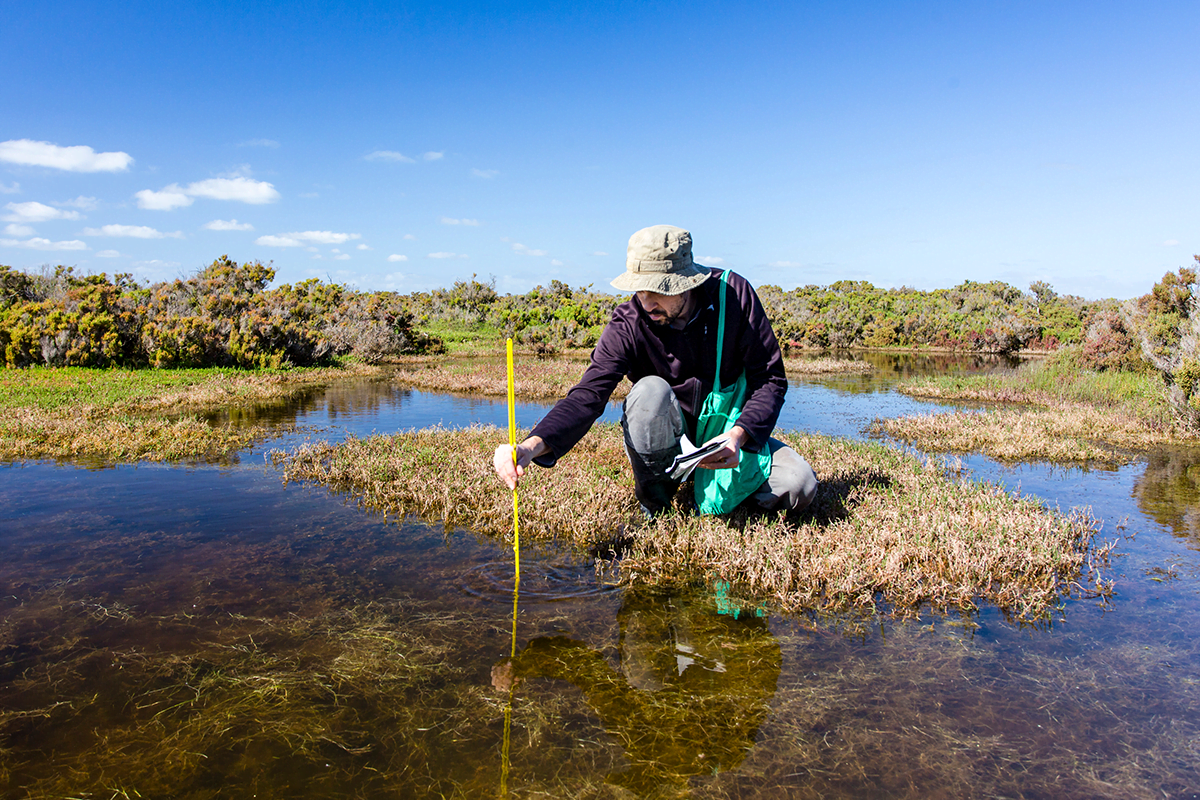 Scientist measuring water quality parameters in a wetland.
Scientist measuring water quality parameters in a wetland.
Biodiversity conservation is a shared responsibility that necessitates the collaboration of various stakeholders. Governments have a crucial role in biodiversity protection by establishing and enforcing laws and policies. The private sector can also contribute significantly to conservation by committing to sustainable practices and supporting conservation initiatives. Local communities and indigenous peoples also play a vital role in biodiversity conservation.
Let us inform you
We will keep you updated on all the latest news.
Green Earth's approach to biodiversity
Green Earth's mission and values
At Green Earth, we recognise the fundamental importance of biodiversity in maintaining a healthy planet. Our mission is to promote biodiversity conservation and sustainable land use through the development and implementation of carbon offset projects. We value ethical and transparent business practices and strive to make a long-lasting positive impact on the environment and local communities.
Green Earth's projects and initiatives for biodiversity conservation
Green Earth specialises in large-scale tree planting and ecosystem restoration projects to restore degraded areas and vital habitats. Our projects not only capture carbon but also offer a range of benefits for biodiversity and ecosystem services. We conduct research and monitoring to measure the effectiveness of our conservation efforts and continuously improve our methods.
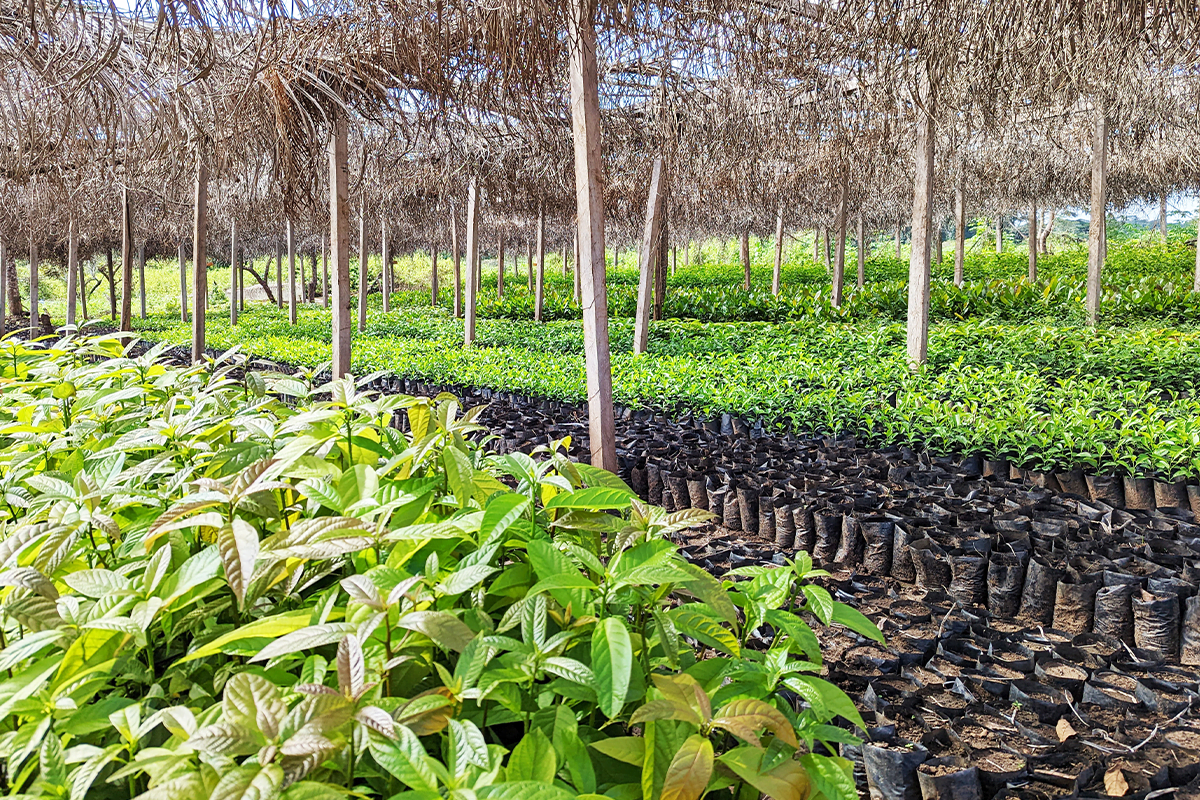 Tree nursery at Green Earth's Greenzone Afforestation Project.
Tree nursery at Green Earth's Greenzone Afforestation Project.
Green Earth's partnerships and collaborations for biodiversity conservation
Green Earth works in close collaboration with various partners, including governments, non-profit organisations, and other private companies, to maximise the impact of our biodiversity conservation efforts. We actively engage with local communities to ensure our projects align with their needs and priorities and promote long-term land stewardship. Through these partnerships, we leverage the expertise and resources of multiple stakeholders to create a more sustainable future for everyone.
Read more: DGB’s Impact Investments, revolutionising responsible investing
Our projects
We develop large-scale, impactful projects.
Importance of biodiversity: a summary
Importance of biodiversity: a summary
Biodiversity plays a vital role in sustaining the planet and the wellbeing of all living organisms. It provides numerous ecosystem services, such as food, medicine, and clean water, essential for human survival. The loss of biodiversity is a significant concern that endangers the planet's capacity to support life and the services it provides.
Immediate action for biodiversity conservation
Immediate action is imperative to conserve biodiversity. Human activities are primarily responsible for the decline in biodiversity, and unless interventions are implemented, the situation will continue to worsen. The good news is that there are strategies and solutions available to conserve biodiversity.
Call to action for individuals, businesses, and governments to conserve biodiversity
Biodiversity conservation is a collective responsibility that involves individuals, businesses, and governments. There are simple actions that each of us can take to make a significant impact, such as reducing consumption, protecting natural habitats, and supporting sustainable practices. Businesses can also benefit from the economic value of biodiversity, like carbon sequestration, while governments can create policies that encourage conservation.
Read more: Carbon project financing: why carbon finance is the smartest bet for future-proof investing
Now is the time for all of us to take action to conserve biodiversity for the sake of the planet and future generations. Green Earth is committed to this cause and continues to work on projects and initiatives that promote biodiversity conservation. We invite you to join us in the effort to protect and restore the planet's biodiversity.
Read more: Why we need to restore high-priority areas like Africa
Deforestation and poaching: Global threats to biodiversity
The future of biodiversity and its impact on human wellbeing has been examined by the Millennium Ecosystem Assessment, which produced four possible scenarios for the year 2050 and beyond. These scenarios are based on regionalisation or globalisation and a proactive or reactive approach to environmental challenges.
In all four scenarios, forest cover is expected to decrease, and agricultural land is expected to increase, particularly in developing countries. This habitat loss will lead to a decline in both local and global biodiversity. Proactive environmental strategies are thus necessary to slow these trends.
Read more: Reforestation and afforestation projects around the world: success stories and lessons learned
Aquatic biodiversity and fish populations are predicted to decline due to high nutrient levels, overfishing, alien species invasion, and pollution.
The loss of biodiversity will have direct and indirect impacts on human wellbeing. Direct consequences include a higher likelihood of abrupt environmental events, such as fishery collapses, floods, droughts, wildfires, and disease outbreaks. Indirect effects include disputes over dwindling food and water supplies.
Despite an expected increase in the average income per person, there may be more inequality in access to food. Trade-offs between opposing aims, such as agricultural production and water quality, or water use and aquatic biodiversity, will need to be addressed in major decisions. Conserving biodiversity can provide many benefits derived from ecosystems, leading to higher levels of wellbeing.







